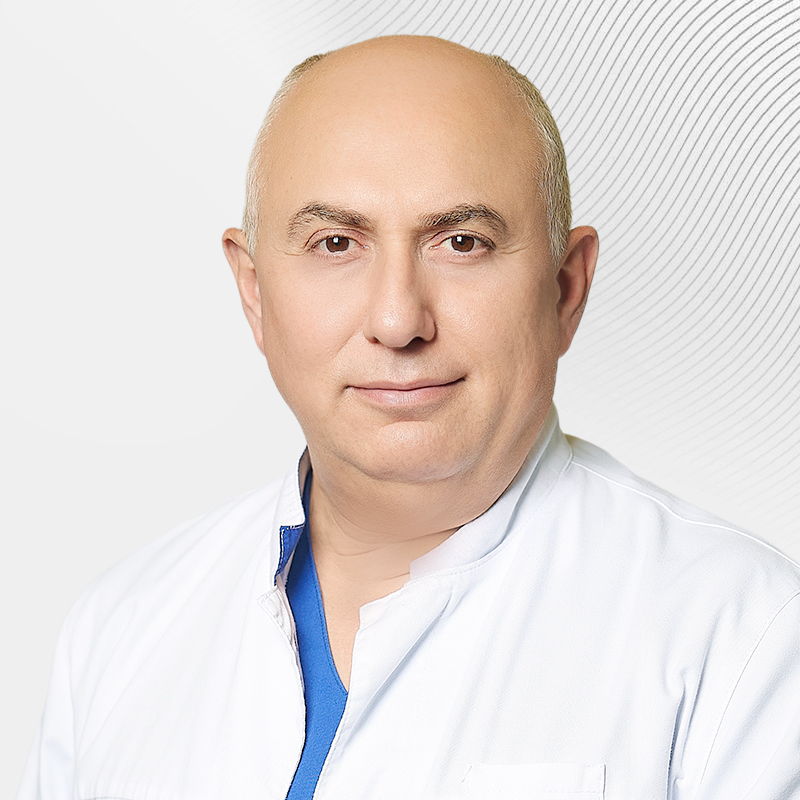Cataract Treatment
Cataract is an ophthalmopathology in which clouding of the lens (the natural optical lens of the eye) develops. As a rule, the disease develops after 60 years of age due to age-related changes in the structures of the eye, but in some cases it is also possible in young patients. At the EMC Ophthalmology Clinic, cataract treatment is conducted by doctors of the highest category using the most modern techniques.
Cataract: general information
The lens of the eye is a biconvex lens that is located just behind the iris and is capable of changing the optical power in order to form a clear picture of near and far objects. Normally, the lens is transparent due to special crystalline proteins. However, under the influence of adverse factors, the protein of the lens fibers is destroyed. As a result, the lens thickens and loses transparency, its optical properties change, and visual acuity decreases.
Changes of this kind are related to several factors:
-
age-related slowing of metabolism;
-
genetics (patients with a family history of the disease have a higher risk);
-
some hormonal or autoimmune diseases, especially diabetes mellitus;
-
mechanical effects on the structures of the eye, including previous injuries or previous operations on the retina;
-
taking certain medications (inhaled or systemic glucocorticosteroids);
-
ionizing radiation (chronic exposure to radiation, radiation therapy, lack of eye protection in bright sunlight, etc.);
-
the patient's lifestyle (obesity, vitamin deficiency, smoking, alcohol abuse).
Uncomplicated cataracts do not pose a risk to the patient's health, although they reduce his quality of life. In the later stages, cataracts can cause changes in other eye structures, which greatly complicates treatment and can lead to lifelong vision loss.
Types of cataracts
According to the location of the altered tissues, the following types of cataracts are distinguished:
- Nuclear. It is formed in the central part of the lens. At the first stage, this type of disease causes visual blurring of distant objects, but near vision can even improve.
- Cortical. The disorder affects the peripheral parts of the lens, while its center remains transparent for some time. White wedge-shaped opacities appear on the periphery of the lens, which slowly spread to the center of the lens.
- Posterior capsule. Opacification begins in the posterior cortical layers of the lens adjacent to the posterior capsule. The pathology affects near vision, impairs resistance to bright light, and causes halos around light sources.
- Mixed. Opacities develop in several areas of the lens simultaneously.
There are four stages of cataract:
-
initial (visual acuity is almost not impaired);
-
immature (visual acuity is significantly reduced);
-
mature (there is no objective vision, the eye perceives only light);
-
overripe (lens fibers are destroyed, the pupil becomes milky white, treatment options are limited).
In some cases, cataracts are a congenital disease and are diagnosed in children in the first year of life. Most often, this pathology develops due to adverse effects during pregnancy or due to genetic abnormalities.
A separate subspecies of the disease is secondary cataracts. This is the name of the clouding of the posterior capsule of the lens, which occurs after the operation to install an IOL. With timely treatment to a doctor, the pathology is successfully corrected with a laser.
When to consult a doctor
Consultation with an ophthalmologist is recommended if you have the following symptoms:
-
blurred, blurred, or cloudy vision (as if through a cellophane film or a stream of water);
- deterioration of visual perception in the dark;
- increased sensitivity to intense light;
- the need for brighter lighting for reading and other activities;
- the appearance of a halo effect around light sources;
- the need to change glasses frequently;
- decreased brightness of color perception;
- double objects.
Diagnosis
Usually, a doctor makes a diagnosis at an initial appointment based on a patient survey and the results of an ophthalmological examination, which provides:
- determination of visual acuity;
- determination of intraocular pressure;
- slit lamp examination;
- determination of visual field boundaries ;
- retinal and optic disc examination;
- ultrasound examination.
Cataract surgery
Conservative methods of pathology treatment are not effective and do not help slow down its development. The only way to treat cataracts is to surgically remove the clouded natural lens and implant an intraocular optical lens (IOL) instead. Today, in modern clinics, this operation is performed by ultrasound phacoemulsification with femtosecond follow-up (femto-cataract). This is a safe and effective surgical procedure that lasts no more than 20 minutes.
Stages of ultrasonic phacoemulsification:
- The doctor makes a miniature incision (no more than 2 mm).
- The anterior capsule of the lens is opened.
- The tip of the ultrasound device phacoemulsifier is inserted into the incision. Under the influence of ultrasound, the lens substance is crushed.
- The formed emulsion is removed from the eye by the irrigation-aspiration system.
- An IOL is installed in the place of the removed lens.
- Suturing is not required, the patient can go home immediately after surgery and return to work or household activities as soon as possible.
In femtosecond phacoemulsification, the first 3 steps described above are performed using a femtosecond laser.
After surgery, the attending physician will recommend that the patient observe a protective regime: avoid mechanical or thermal effects on the operated eye, use antiseptic drops, do not lift weights, do not go to the sauna, steam room, swimming pool for 1 month.
EMC Ophthalmology Clinic uses the most advanced Constellation Vision System phacoemulsifier from Alcon (USA) and a femtosecond laser from Ziemer (Switzerland).. The choice of artificial lenses in our clinic is extremely wide: depending on the wishes and features of the patient's vision, the doctor will offer an artificial lens made in the USA, Germany, Great Britain or Switzerland. Secondary cataract treatment is performed using the most advanced YAG laser from NIDEK (Japan).
Doctors
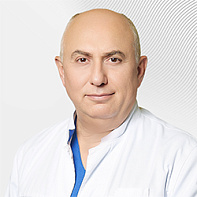


.jpg)

.jpg)
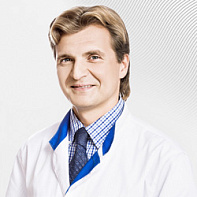
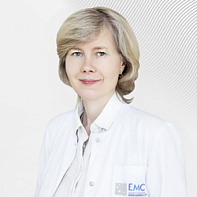

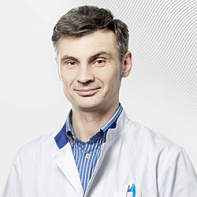

- Performs vision correction surgery
- He graduated from the MNTC "Eye Microsurgery" named after S.N.Fedorov. He has interned in various foreign clinics
- He worked in foreign clinics: Moorfields Eye Hospital,Heidelberg University Hospital,Centre Hospitalier Universitaire de Bordeaux
